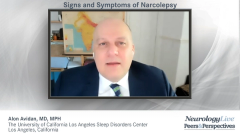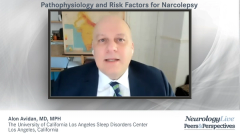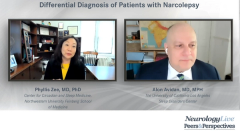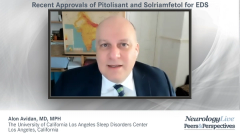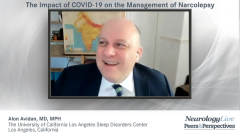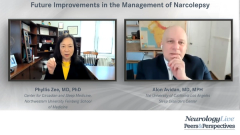
Behavioral Approaches to the Management of Narcolepsy
Experts in neurology discuss the goals of treatment and consider behavioral approaches to the management of narcolepsy and idiopathic hypersomnia including naps and exposure to sunlight.
Episodes in this series

Phyllis Zee, MD, PhD: Let’s switch gears a bit toward treatment and management of narcolepsy. I tend to think about it like this: You want to be tailoring your treatments to the individual and the severity of their symptoms, such as whether they have comorbidities like hypertension. That would change the choice of medications as well. I also think a bit about the age of the patient. For example, they may have medications that may or may not be as appropriate for them, especially if they are in school.
What are your thoughts? Let’s start with some of the behavioral approaches. That is important. You already mentioned those. I want them to have a regular sleep-wake schedule. We want them to get sufficient opportunities to sleep before we even try to diagnose them with something like narcolepsy. Tell me a bit of some of your strategies for behavioral therapies.
Alon Avidan, MD, MPH: When I diagnose a patient with narcolepsy, and I see them for follow-up to discuss management, I usually ask patients about what bothers them the most. If you ask them pointedly, patients will tell you what symptom bothers them the most and what is the most disabling and debilitating aspect of the disease. They will tell you. Most patients will tell you that it is the daytime sleepiness. Most individuals with cataplexy will give you certain examples of how cataplexy has affected them by discussing the frequency or the severity. How has it prevented the patient from doing things that they wished to do, such as taking classes, being in school, and having certain vocations that require a maintenance of alertness? Try to get a sense from the patient’s own point of view rather than telling them, “I have this sort of option for management.” It is important to get a sense of the patient’s own perspective about what bothers them the most.
Over the years, I have had patients who tell me pointedly that, while they are having symptoms, they would rather not treat 1 specific complaint of narcolepsy, like cataplexy, because it does not bother them as much. What bothers them the most is the degree of sleepiness. As you mentioned, the fragmented nocturnal sleep, for some patients, is as disruptive as the daytime sleepiness. They will tell you, “Doctor, I wish I could have my sleep fragmentation improved. Those awakenings drive me crazy.” They will tell you specifically that those are the elements or attributes of narcolepsy that bother them the most.
Sometimes with clear-cut cataplexy, even though it happens once a week or twice-a-month, people may think this needs to be treated, but some patients are OK with it. They can go on with their lives, and it does not bother them. But not for others. I have had a patient like that. I have heard of a patient who missed his daughter’s wedding because he was afraid of experiencing cataplexy, because of the excitement and seeing relatives. That is really sad, so those are things we want to address.
Phyllis Zee, MD, PhD: I had a patient who was in high school, and she was sleepy, but cataplexy was her main issue because she could not laugh. If she laughed or if somebody told a joke, she would fall because she had severe cataplexy. She would walk around the halls around the walls because she did not want to fall. To her, that was the main thing, as well as getting a driver’s license. I totally agree. It has to be tailored to the individual patient’s needs.
One of the kinds of behavioral strategies is napping. Scheduling naps has been helpful to many of my patients, even 1 nap or short naps. That is the other characteristic of patients with narcolepsy: that short nap of maybe 10 or 15 minutes is refreshing and can help carry them a bit further. For somebody with sleep apnea, if they nap during the day, they will probably stay asleep for more than an hour. That can be helpful, especially in children and even in adults. I have had patients go to their car during work in the middle of the day after lunch and take a 10- to 15-minute nap, so that has been helpful. I also ask patients to increase light exposure during the day because that can have an activating effect in conjunction with pharmacological therapy.
Alon Avidan, MD, MPH: Dr Zee, you are absolutely right about naps being effective for folks with type 1 narcolepsy. If the naps are particularly effective for type 1 narcolepsy, they are probably less effective for folks with idiopathic hypersomnia. Those individuals will actually feel that the naps are more disruptive to them. They will wake up even more tired after a power nap. For those with type 2 narcolepsy, it may be to a lesser extent, but it is not entirely clear. The paradox is that naps can be helpful for folks with type 1 narcolepsy, but when the patient tells you that their naps are unrefreshing, they may be having more sleep inertia or sleep drunkenness. That is a sign that is part of the syndrome of idiopathic hypersomnia.
Phyllis Zee, MD, PhD: Thank you for watching this NeurologyLive® Peers & Perspectives® program. Please subscribe to the e-newsletter to receive upcoming Peer Exchanges® and other great content in your in-box.
Transcript Edited for Clarity
Newsletter
Keep your finger on the pulse of neurology—subscribe to NeurologyLive for expert interviews, new data, and breakthrough treatment updates.

